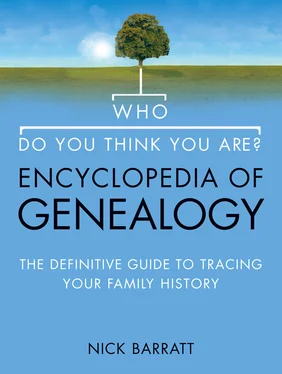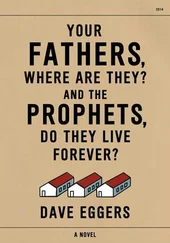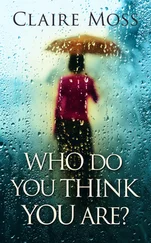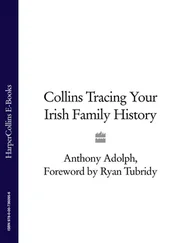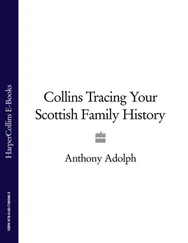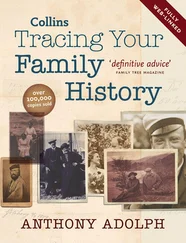Unfortunately, census returns for certain districts have not survived to the present day for various reasons. If every other search has failed, check to ensure that the return for your sub-district does survive. Ancestry’s website has a list of missing census returns for the early censuses (1841 to 1861). Otherwise, check with your local record office. Of course, you need to be sure your ancestor was living in that area in the first place. Sometimes, people would be visiting relatives on census day and would not be recorded in their home town anyway.
‘ Although every person should be listed on the census, people did slip through the net .’
Don’t forget that there might be another reason your ancestor isn’t listed at home – they might be residing in a school, workhouse, prison or ship, or perhaps had enlisted in the army or navy, in which case they could be located far away from their place of birth.
Census Returns for Scotland
Censuses were taken in Scotland on a similar basis to England and Wales from 1801 onwards. Scotland was divided into registration districts and sub-districts and enumerators were responsible for circulating and collecting the schedule forms. The enumerators would then enter the information into the census return books, which form the Scottish census returns that you can see today.
The original returns are now held at the GROS in Edinburgh. These records are also subject to 100-year closure rules. Nevertheless, it is possible to view the returns from 1841 to 1901 at GROS, which has computerized indexes for these returns for the entire period along with some other indexes, such as street indexes for certain areas and some privately produced indexes. As microfilm and fiche copies were made of the original returns, various local archives, record offices and libraries will hold copies for their area as well, so a trip to Edinburgh might not be necessary.
The returns are also available online on the following websites:
• www.scotlandspeople.gov.ukThis is the main website for those conducting genealogical research in Scotland, being the official government source of genealogical data. Most of the key sources have been placed here, including all publicly available census returns for Scotland. The information is not free of charge, although you can search the databases after registering for free. However, you will have to pay to view the results and see digital images.
• www.ancestry.co.ukAncestry has also placed Scottish data on its website. At the time of writing, searchable indexes for all census returns from 1841 to 1901 were available. These indexes relate to transcriptions of the original entries on the forms. It is not possible to view a copy of the original entry, only the transcription.
‘ Most of Ireland’s early census records were destroyed by a fire in 1922 .’
Census Returns for Ireland
The process of producing census returns for Ireland began slightly later, in 1821, and they were compiled every ten years subsequently. Unfortunately, most of the records were destroyed during the Civil War in 1922. Very little now survives for the nineteenth century. However, the returns for 1901 and 1911 are available and survive in their entirety.
Nineteenth-century Returns
The small proportion of census returns that do survive for this period can be found at the National Archives of Ireland, Dublin. They are organized county by county and some name indexes for certain counties have been prepared. Local county record offices may have copies of surviving records for their local area and it is worthwhile contacting these institutions first.
1901 and 1911 Census Returns
As mentioned, both these returns are already available to the public and there are plans to make them available online from late 2008 onwards. Details can be found on the National Archives of Ireland website.
The records were collected on a similar basis to those of England, Scotland and Wales; forms were duly completed by the head of the household and given to the enumerator to compile the returns. There is no complete name index for the entire country and the records are organized by Poor Law Union, district, parish and town. Hence, it is necessary to have an approximate idea of where your ancestor was living before you can search.
The returns contain all the details that are to be found in their English, Welsh and Scottish counterparts, as well as additional information. The 1901 census provides details about the condition of the house in which your ancestor was resident, as well as their religious denomination. The 1911 census also includes information on how long women had been married and the number of children born of this marriage that were still alive.
The census records can be found for the whole of Ireland until 1921 at the National Archives in Dublin, which also holds the census returns for the Republic of Ireland post 1921, though they are not yet open for public inspection. The Public Record Office of Northern Ireland, Belfast, has the census returns for the six counties prior to partition and also after 1921, though these later records are similarly closed to the public. Additionally, local centres should have copies of returns for their particular area.
Griffiths’ Valuation
Although the census records for Ireland before 1901 were largely destroyed in 1922, there is one resource still available that can be used to partly fill in the gaps – the Primary Valuation, more commonly known as the Griffiths’ Valuation after the director of the Irish Valuation Office of the time, Richard Griffiths. It is a survey of property throughout all Ireland covering the period 1848–64, and was used to determine the amount of tax each person should pay towards the support of the poor in each Poor Law union at a time when the Irish Famine was at its worst. The returns cover every household, building and land, listing everyone who paid rates – with the name of the occupier and owner (if rented) included for private property and houses, making it an important way of establishing where a family lived. They are arranged by barony and civil parish with indexes to the townlands covered in each volume. Index volumes and returns can be seen at the National Archives of Ireland, as well as copies in regional research centres; whilst access online is via www.origins.net .
The third of the four main sources that genealogists use are ecclesiastical records generated at local level by parish churches and various other religious organizations. Registers of baptisms, marriages and burials contain some biographical information that you can use to extend your family tree further back in time – theoretically to the sixteenth century, when parish registers were first introduced. This chapter explains what the records are, how you can use them, and where they can be found. It also lists some of the non-conformist records generated by religious groups outside the authority of the Church of England.
It is possible to make significant progress in building your family tree using the two sources discussed in the previous chapters – civil registration certificates and census records. However, if you want to work further back in time, pre-nineteenth century, you will have to turn to records generated at a local level, not by the State but by the Church. Together, these sources are loosely described as ‘parish registers’ and they record key events in a person’s life, such as baptism, marriage and burial. Since parish registers were introduced in the mid-sixteenth century, and continue to the present day, they are one of the longest continuous sets of record available – though a large degree of luck is required to find an ancestor in the earliest surviving registers.
Читать дальше
